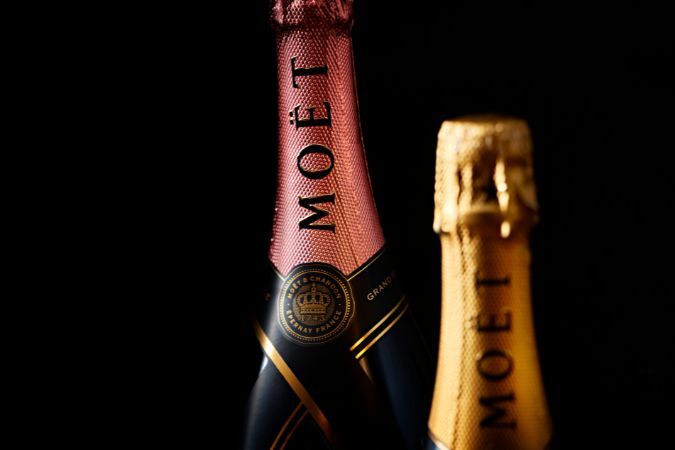It was not until 1842, 99 years after the foundation of the house, that Moët & Chandon produced its first vintage Champagne. In total, a mere 13 vintages saw the light of day in the 19th century, followed by much more frequent releases in the 1900s. The major turning point came in 1921, when the house bottled its first ever Dom Pérignon cuvée alongside its regular vintage release. Between 1921 and 1943, the wine inside both iterations was in fact one and the same, and even after production diverged, the wines coexisted in the Moët & Chandon portfolio for several decades. Dom Pérignon, however, was the cuvée de prestige and attracted most of the attention, as well as rapidly increasing in production volume. Its success meant that the standard Moët vintage was edged out of the limelight. On the plus side, though, for those in the know, the quality of the Vintage was always there – and indeed, the wine could be seen as very much undervalued compared to its more famous cousin.
When, some 15 years ago, Dom Pérignon was separated from Moët & Chandon and branded as a Champagne house in its own right, Moët’s vintage release was renamed Grand Vintage (the first official vintage under that name being 2000) in pursuit of wider, premium recognition. The wine was even given a chance to shine fully as a late-disgorged Grand Vintage Collection, showcasing much older vintages in an idea comparable to the Dom Pérignon P2 and P3 releases. Thus, in many ways, the link between the two cuvées remains tight.

Today, Grand Vintage represents a small fraction of Moët & Chandon’s output, similar in proportion to many other houses’ vintage Champagne. As a result, chef de cave Benoît Gouez can focus solely on quality, with full freedom of expression and little pressure to declare it. In fact, Gouez says there are very few rules in the making of Grand Vintage. He uses base wines that reflect the best qualities of the year’s harvest from Moët’s incomparably rich source, meaning the varietal blend can vary greatly from vintage to vintage. Some blends are dominated by Pinot Noir and others by Chardonnay, but surprisingly, Meunier can play a key role, too. (In 2003, Meunier registered a 43% share, proving that there really are no recipes when it comes to Grand Vintage.)
This autumn, Moët & Chandon released its 76th vintage, from the sunny and dry 2015 season. The declaration of 2015 was expected, even if the vintage has proven to be less exciting than the initial hype suggested. After all, the house has never been shy of making vintage Champagne in warm years, and it can boast a fine track record of outstanding examples throughout its long history. Adapting to climate change is a key part of this, and Gouez’s era as head of winemaking has seen dosage levels markedly reduced – as a response not only to the changing climate but also to evolving consumer taste.
‘I’m interested in showing a touch of noble bitterness in the wines, something beyond just acidity, for a more acquired taste,’ Gouez says in reference to the modest 5g/l sugar addition for hot, potentially phenolic vintages. Moving the style away from the more crowd-pleasing aspects of the house’s non-vintage bottlings is evident in the 2015 Grand Vintage, while the Grand Vintage Rosé goes a step further in boldly expressing its warm vintage Pinot Noir red wine component in both colour and character.
After a lengthy maturation in the cellar, Moët & Chandon vintages are ready to be enjoyed on release, but they are by no means at their grandest at that point. Thanks to the meticulous, reductive winemaking style and vast sourcing options, Grand Vintages are among Champagne’s most ageworthy cuvées. This, I got to witness first-hand last autumn, when we celebrated a century of Moët vintages at the maison. Gouez himself handpicked two great vintages from each decade, from 2008 all the way back to the house’s legendary 1921. Composed mostly of long-lees-aged magnums disgorged in front of us, the traditional way, without freezing the bottle neck and with no added sugar (making the wines brut nature), this once-in-a-lifetime tasting was a liquid testament to the quality of Moët & Chandon vintages.

















